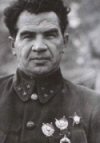PavelKirilovich
Posts: 89
Joined: 9/7/2011
Status: offline

|
In response to your first post only, Mad Russian, amplifying some points:
The Great Patriotic War (1941-1945) had an enormous impact on Soviet military thought. Their operational planning for fighting against NATO, as far as we know it and has been declassified for public use, reflects wartime experiences. These experiences were updated throughout the Cold War, most notably as a result of the 1973 Arab-Israeli War, though this led to little change in the tank and motor rifle forces, a great deal of change everywheres else - most notably in the artillery, air defence and electronic reconnaissance/intelligence organizations.
Planning therefore consisted of either preventing the formation of a linear defence in depth through high-tempo combined arms advances, led by powerful forward detachments, or a breaking through of the linear defences through the entirety of their tactical depth to force NATO armies to commit to operational manouevre, something the Soviets believe they would do better than their NATO opponents. Given that NATO still has not fully grasped the concept of operational level warfare as the Soviets had and the Russians continue to do, thinking instead on a "mega-tactical" scale a'la the 19th century, I believe that assessment was probably accurate. If the enemy defence coalesced into battalion/brigade/division areas of resistance, arranged in depth, then the Soviet plan was to effect a breakthrough of this defensive zone and again, force the enemy into operational manouevre. [Simpkin, "Deep Battle: The Brainchild of Marshal Tukachevskii", plus a bunch of stuff by Glantz and Grau]
Given that the road and rail networks in Europe could support a maximum of 20-25 divisions on either side, massive Soviet superiority didn't count for much. I believe at the height of the Cold War the Soviets had 25 divisions ready to go, we had 18. Not too bad given Soviet divisions tended to be smaller and have less ability to sustain battle; the ability of an army or front to sustain a continued offensive depended, in large part, upon the echelonment (as distinct from reserves) of that unit's subunits. [General Simpkin, "Race to the Swift." Also, possibly, his work "Deep Battle: The Brainchild of Marshal Tukachevskii"]
There is such emphasis on the meeting engagement because if you win that, it was perceived by the General Staff that you would not have to conduct the above-described operations. You could transition directly into operational manouevre and begin kicking ass.
I believe you are completely correct when you say that NATO did not understand the Soviet conception of operational battle, or how they intended to fight the operational battle. Having talked to Soviet Army veterans and read DIA publications regarding the tactical methods of Soviet Army units, I think we had a very good handle on what they would try to do tactically. So did the Wehrmacht. However, the Wehrmacht was defeated comprehensively at the operational and strategic level and it is all well and good that your Tiger platoon destroyed a battalion of T-34s; but you are now encircled, along with the rest of your division, and out of ammunition. What now, mein herr?
And I think NATO would have been in the same boat, largely, especially given that they never forbade the German Bundeswehr to practice "Forward Defence", which granted is necessary because the Federal Republic of Germany had sweet f*ck all in terms of depth. You mention the German defensive practices of WWII, this is basically what we intended to do, but the Germans were unlikely to do that: because if they made just two steps back the way they did in 1944 and 45 being pushed out of Ukraine, Belarus and Poland, they'd find themselves in France.
What that means is that the Soviets would not have had a difficult time encircling units.
The primary doctrine was Air Land Battle. The core tenent of this is disrupting Soviet strategic and operational echelonment and to a lesser extent tactical echelonment, so we only have to fight one wave at a time, essentially. This is to be achieved through the use of airpower attacking across the Soviet tactical depth, and artillery firing into their tactical depth. This is all well and good, except Arabs manning Soviet air defences do not provide a good metric for what those air defences are capable of. I direct your attentions to Google. Input "SAM Simulator" and you'll see what I mean. It's quite a good program and demonstrates why the Arabs did not do very well with the equipment.
Enjoyed reading your thoughts, will hit up the rest of it when I have more time to read enjoyable things rather than coursework-things, MadRussian. 
_____________________________
Ac her forþ berad; fugels singað, gylled grœghama. Wyrd bið ful aræd.
|
 Printable Version
Printable Version








 New Messages
New Messages No New Messages
No New Messages Hot Topic w/ New Messages
Hot Topic w/ New Messages Hot Topic w/o New Messages
Hot Topic w/o New Messages Locked w/ New Messages
Locked w/ New Messages Locked w/o New Messages
Locked w/o New Messages Post New Thread
Post New Thread